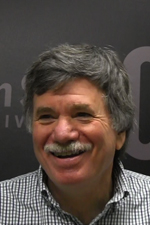Biography

Lewis O. Semprini was born in 1952 in Waterbury, Connecticut, where he grew up. After two years of undergraduate study at Worcester Polytechnic, Semprini transferred to the University of California, Berkeley, where he completed his degree in Chemical Engineering in 1974.
Following his graduation from Berkeley, Semprini remained in the Bay Area, accepting a position with Pacific Gas & Electric as a chemical researcher. In his three years at the company, Semprini was tasked with working on the first geothermal power plants in the U.S., with particular focus paid to issues of air pollution. His time at PG & E sparked an interest in environmental engineering, and Semprini ultimately chose to pursue further education in the field. Enrolling at Stanford University in 1977, Semprini was able to work with leaders in the discipline who were helping to advance its purview from wastewater treatment to larger issues of contaminants in the environment. After earning master's and engineer's degrees at Stanford, Semprini pursued a Ph.D. that placed a strong emphasis on geothermal reservoirs. He completed his doctorate in 1986.
Semprini was subsequently invited to stay on as a research associate at Stanford and manage an expansive project on in situ bioremediation and microbial processes. This program of work ultimately came to include the problem of the groundwater contaminant Trichloroethylene (TCE), a popular degreaser used at many military and industrial sites throughout the U.S. Semprini's work on this initiative proved groundbreaking in its successful modeling of the means by which co-metabolic processes could be deployed to safely decompose TCE.
Semprini's connection to Oregon State University initially came about through the Western Region Hazardous Research Center, an organization that brought together scholars from both OSU and Stanford, among other institutions. Semprini worked as Assistant Director of the center from 1990-1993. Through connections made during this time period, Semprini was ultimately invited to apply for a tenure-track position at Oregon State, and was hired in 1993.
As a member of the Engineering faculty at OSU, Semprini's research has largely focused on subsurface materials, including investigations of samples taken from the Willamette River - a project that led to the discovery of microorganisms that could metabolize chlorinated solvents, such as TCE. Semprini has also investigated the conversion of methane into biofuels, and played a major role in the creation of an independent OSU graduate degree in Environmental Engineering. In 2007, he was named an OSU Distinguished Professor, the highest award that the university bestows upon members of its faculty.

